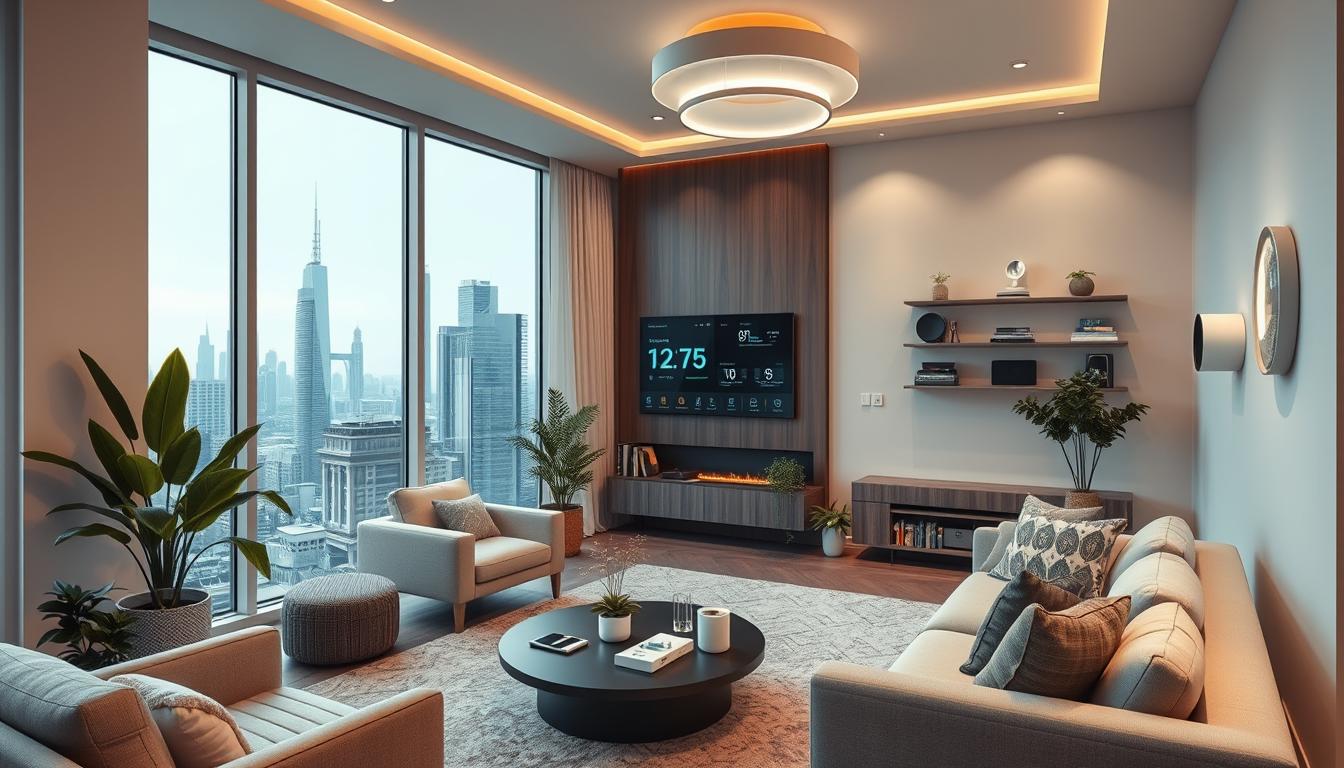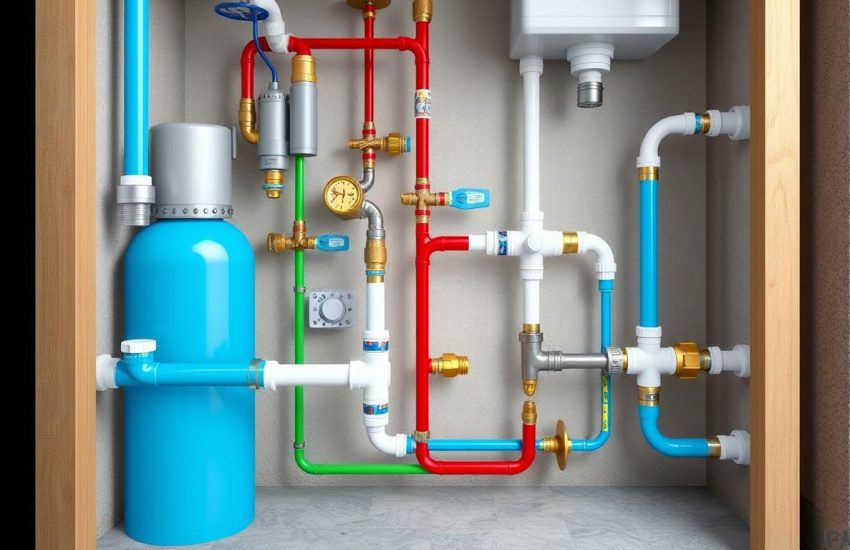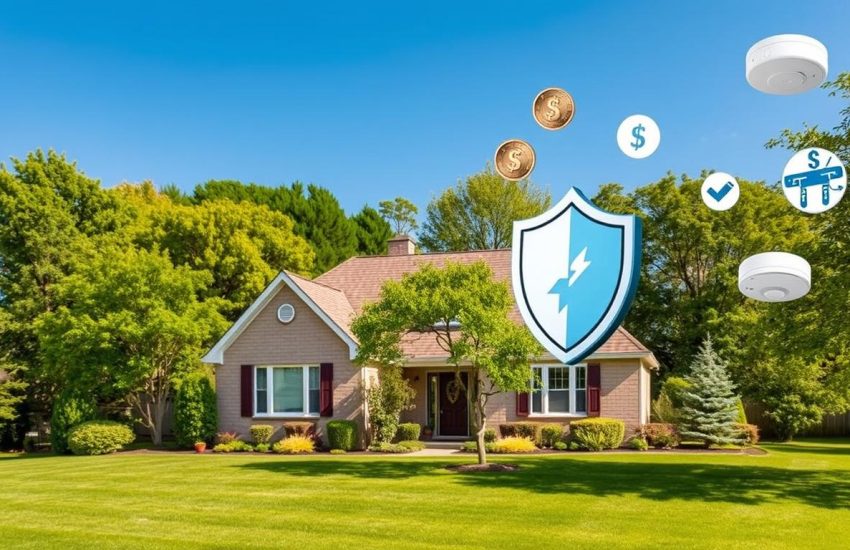Smart Home Technology: A Complete Guide for Homeowners
Is your home smarter than you think? Today, smart home technology is changing how we live and work. Around the world, 300 million houses are now smart homes. How is this change reshaping our homes and the way things connect?
People are welcoming the benefits of smart devices. These perks include better security and lower energy bills. For example, smart thermostats can cut your heating and cooling costs by 15%. Think about managing your home with just a tap or voice commands. This is what the smart home revolution brings.
These smart features offer control, efficiency, and are a wise investment. Smart homes don’t just make life easier right now; they also boost your home’s value. With high-tech security and smart, energy-saving appliances, your home could be more attractive to buyers. This means you can save money over time.
Technology keeps getting better, making smart homes easier to use. Voice assistants like Amazon Alexa, Google Assistant, and Apple HomeKit help blend devices smoothly. If you’re not big on tech, companies like Princeton Electrical Makeover can help install everything. They make moving into the smart future easy.
Key Takeaways
- Smart home technology can lead to significant savings on energy and utility bills.
- Increased property value is a potential benefit for homeowners investing in smart home systems.
- Accessibility and ease of use have become hallmarks of modern home automation.
- Professional installation services ensure smooth and functional integration of complex systems.
- Artificial intelligence is on the frontline, advancing smart home systems to learn and adapt to user preferences autonomously.
- The interconnectivity of smart home devices contributes to a streamlined and convenient lifestyle.
- Affordability and variety offer homeowners a broad spectrum of smart home technology to fit specific needs and budgets.
Why Focus on Smart Home Technology?
The charm of smart home devices stands out today. They bring efficiency and convenience into homes. Consumer trends are all about these features. With smart home market growth on the rise, it’s key to understand their appeal. These gadgets change old homes into homes that are easy to manage and save energy.
Take the Google Nest Mini and Amazon Smart Plug, for example. They fit perfectly into your home. They don’t just update old stuff. They totally change the feel of a home.
Starting with smart technology doesn’t have to be pricey. For newbies, picking small, single items is budget-friendly. While a big setup might cost up to $15,000, simple items like smart bulbs or a thermostat could be less than $100.
| Product Type | Investment Range | Potential Home Impact |
|---|---|---|
| Full-scale Automation | $5,000 – $15,000 | Complete home control |
| Individual Devices | $30 – $100 | Targeted enhancements |
| Luxury Automated Systems | $100,000+ | High-end, comprehensive integration |
About 72% of people worry about security with smart homes. So, keeping data safe and devices secure is a must. Balancing security with innovation is the smart home industry’s big challenge.
As homes get smarter, people want more than just comfort. They seek experiences that change life. The arrival of Matter, supported by big names like Amazon, Apple, and Google, aims for smooth experiences across gadgets.
Hence, focusing on smart home tech is about more than trends. It’s about a future where homes are connected and control is straightforward. Smart homes are shaping the way we live.
DIY vs Professional Help
Homeowners have a choice to make when setting up smart home tech. It’s between doing it themselves or getting professional help. Both options offer unique benefits for setting up smart homes. This includes managing the home’s setup and network. Checking out how to maximize home improvement can help in making this choice.
Going the DIY route means you can customize and be hands-on. It’s often cheaper at first. You might install simple devices like smart bulbs or plugs by yourself. These add quick updates to your home. Yet, more than one-third of people find DIY challenging. It can lead to mistakes and frustrations.
Choosing a pro means hassle-free setup. Experts make sure everything is set up right. Companies like LelchAV and Control4 have technicians for this. They install complex systems to work well in your home. This ensures advanced devices work smoothly and match your home’s system.
About 22% of people return smart products because of setup problems. This shows how valuable professional help can be. Teams like those from Goodman Networks are well-trained. They can handle complex tech from different brands easily.
To wrap it up, while DIY might save money, professional help has big advantages. It saves time, reduces mistakes, and gives you peace of mind. This choice affects how well your smart home tech works for you.
How to Save Money
Using affordable smart home technology is more than improving your home. It’s a smart investment that saves you money. Energy-efficient gadgets are key to cutting utility bills. This makes them important for people who care about the planet and their wallets.
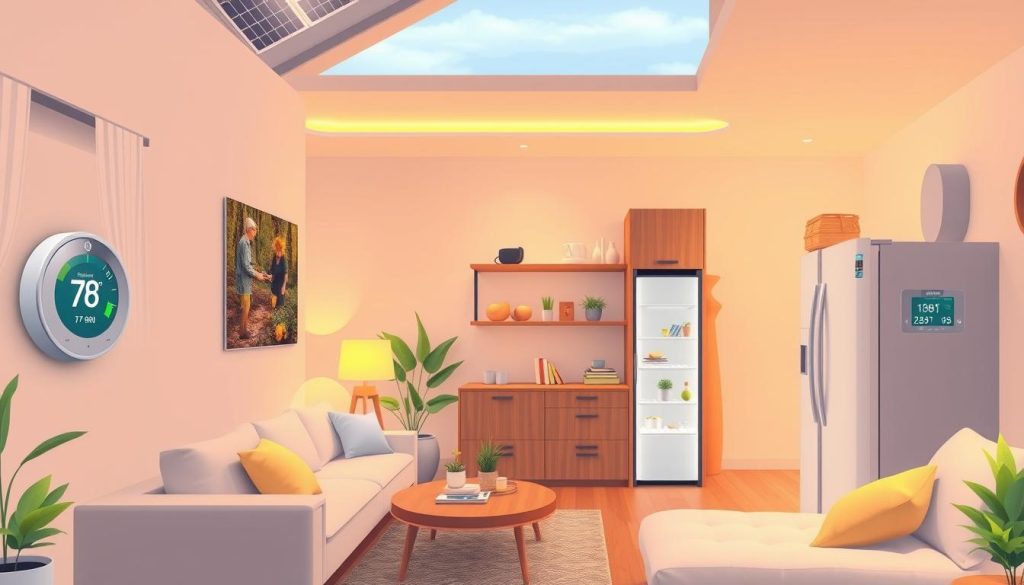
Think about getting smart thermostats. They help families save around $225 each year. Also, using LED bulbs instead of normal ones saves a lot of energy. They last much longer too.
- Smart appliances, like efficient washing machines, use the right amount of soap. They save energy and money.
- Smart sprinklers adjust to the weather. They don’t waste water, saving resources.
- Smart plugs and power strips stop the waste of energy from devices not in use.
Using these technologies helps save money and the planet. Smart homes use less energy and produce fewer carbon emissions. They can also lower home insurance costs with smart security systems.
Getting rebates from energy companies for buying smart tech also helps. Choose the best devices for your money. Making your home smarter is a smart and profitable choice.
As smart home tech becomes easier to get, it helps us save money and protect the environment. It’s not just about a nicer home. It’s a smart money move too.
Step-by-Step Upgrades
Switching to a smart home doesn’t mean you need to do everything at once. By taking it step by step, you can add smart features easily. This makes your home more convenient and saves energy. When upgrading, it’s smart to pick devices that work well together and to add things bit by bit.
Begin with basic things like smart plugs and lights. These basics pave the way for adding more complex stuff later on, like smart thermostats or security. Check if your home’s wiring can handle these new gadgets. Most new homes can because they have a big enough electric panel.
It’s also key to protect these gadgets from power surges. That way, they last longer. Making sure your Wi-Fi is strong everywhere in your house is just as important. This keeps everything running smoothly without delays or dropping connections.
A good plan for setting up a smart home includes:
- Checking your home’s wiring and electric setup first.
- Adding smart devices gradually, starting with lights and plugs.
- Putting in good surge protection to keep devices safe.
- Improving Wi-Fi to cover your whole home without gaps.
If you want to know more about how to do this setup, this detailed guide has a lot of good advice and tips for making your home smart.
| Upgrade Area | Consideration | Importance |
|---|---|---|
| Electrical Capacity | 200-amp panel preferred | High |
| Wiring Integrity | Check for outdated systems | Critical |
| Device Compatibility | Ensures seamless functionality | Essential |
| Wi-Fi Coverage | Eliminate connectivity drops | Important |
| Surge Protection | Guard against voltage spikes | Advisable |
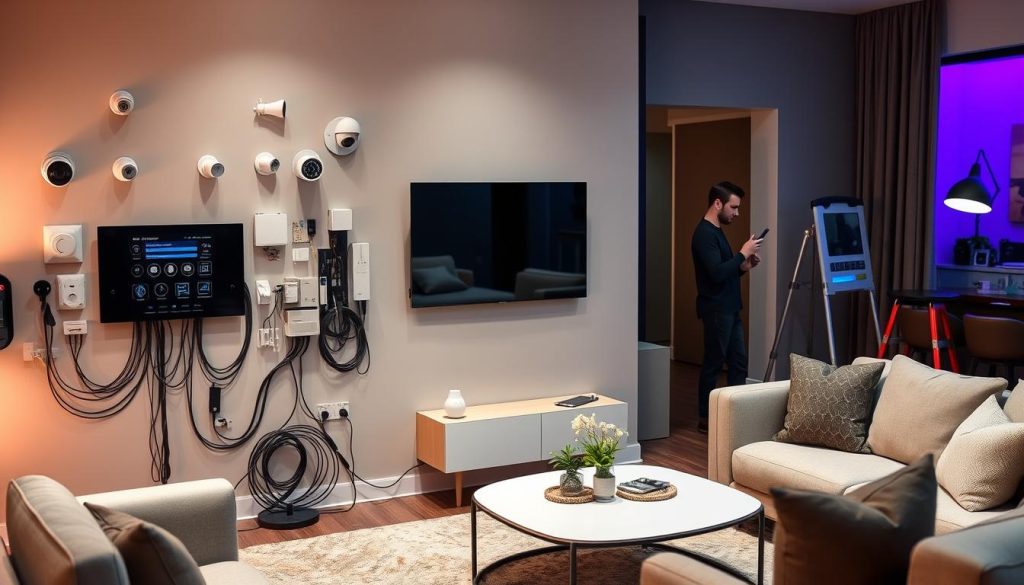
When you plan everything carefully, making your home smart is exciting. You start by making sure your house is ready for these devices. Then, pick gadgets that work well together and strengthen your Wi-Fi. This turns your home into a smarter place that makes life better.
Final Tips for Success
Planning for smart home technology is very important. A good smart home setup increases comfort and saves energy. 78% of Canadian homeowners say it reduces energy use. Smart homes are attractive to buyers. 79% know the benefits of smart home tech. It’s a smart investment for the future.
Security is always a key focus. Things like smart locks and video doorbells make homes safer. Security cameras help scare away intruders. Also, smart lighting and thermostats save energy. For example, smart devices lower standby power use, says Lawrence Berkeley National Laboratory. Smart window shades and bulbs also save energy and make homes nicer.
But with these tech benefits, internet security is crucial. Regular updates and multi-factor authentication protect your smart home. Use strong passwords and Next-Generation Firewalls (NGFW) for defense against cyber threats. Virtual Private Networks (VPN) add extra privacy. Remember these tips as your home gets smarter. This ensures a safer, efficient, and well-managed home.

